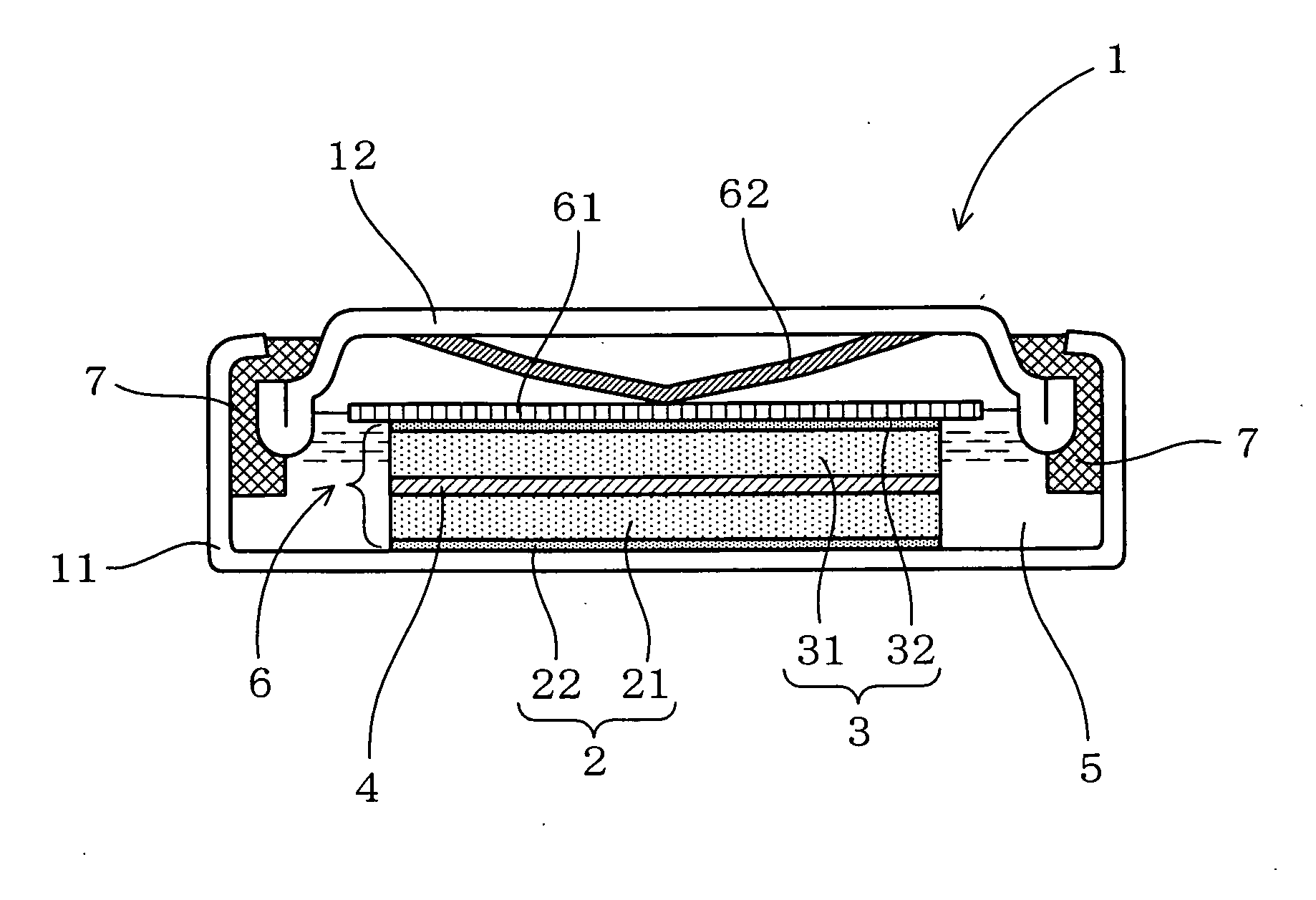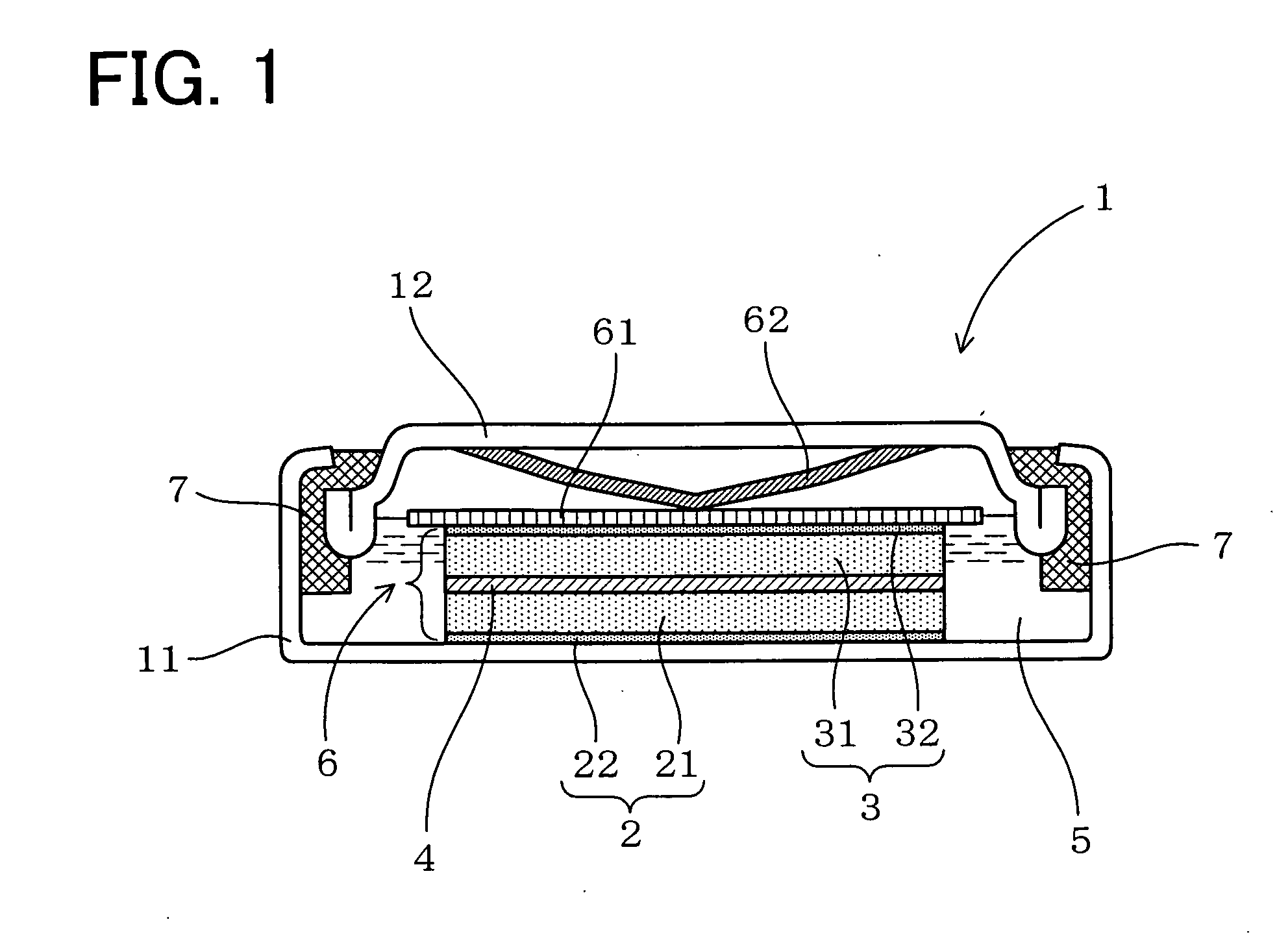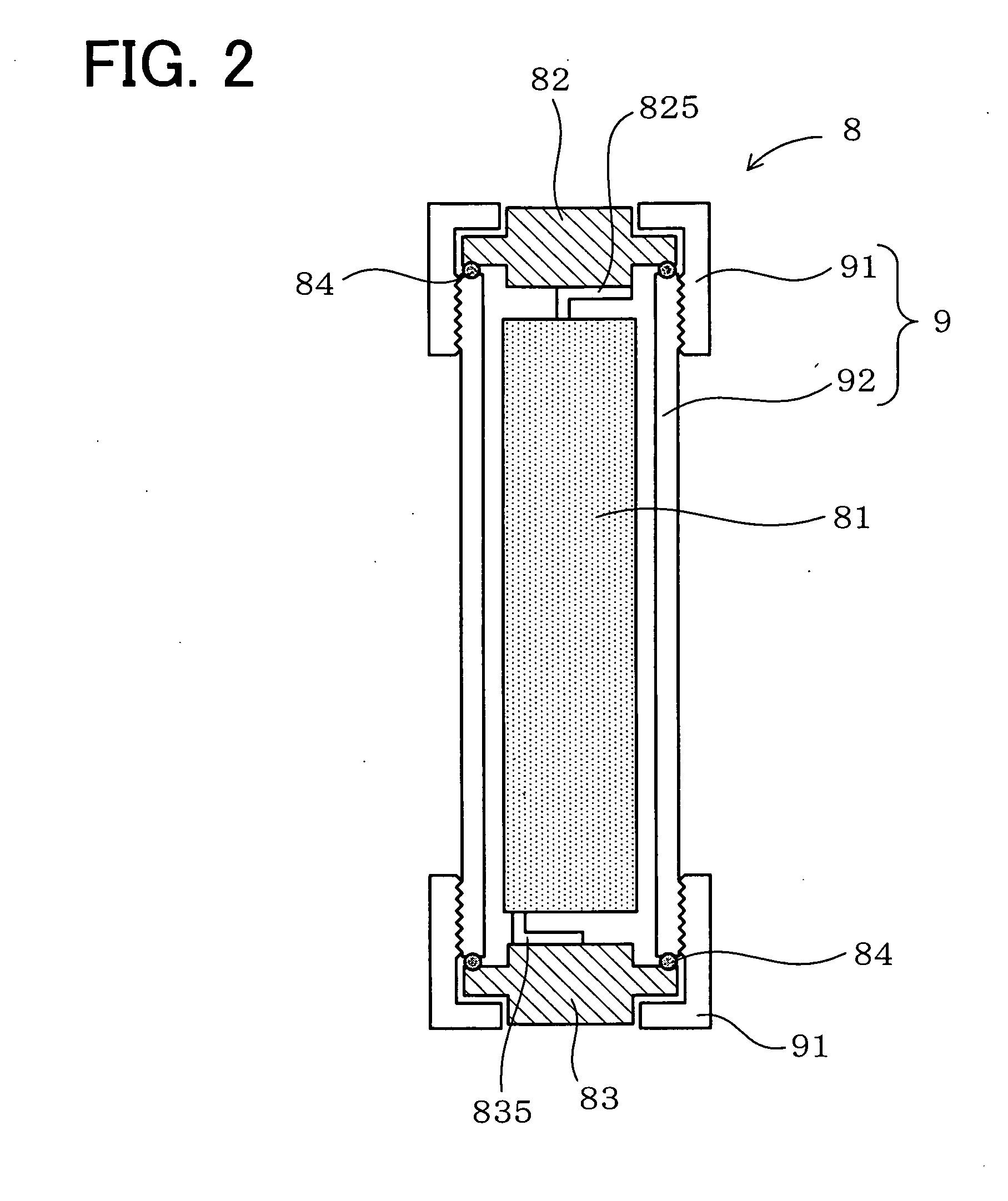Water based lithium secondary battery
a lithium secondary battery and water-based technology, applied in the field of can solve the problems of unsuitable water-based lithium secondary batteries and lack of material stability, and achieve the effect of large capacity
- Summary
- Abstract
- Description
- Claims
- Application Information
AI Technical Summary
Benefits of technology
Problems solved by technology
Method used
Image
Examples
example 1
[0090]Next, a description will be given of an example of the present invention with reference to FIG. 1.
[0091]In the present example, a water based lithium secondary battery was made and its characteristics were evaluated.
[0092]As shown in FIG. 1, a water based lithium secondary battery 1 of the present example includes a positive electrode 2, a negative electrode 3, a separator 4 sandwiched between these, and an aqueous electrolyte solution 5 obtained by dissolving an electrolyte made of a lithium salt into a water based solvent. As the water based solvent to dissolve the electrolyte therein, a pH buffer solution has been employed.
[0093]In the present example, the positive electrode 2 is supposed to use LiFePO4 as its positive electrode active material and the negative electrode 3, LiV2O4 as its negative electrode active material. The positive electrode 2 is formed by applying a positive electrode admixture 21 containing the positive electrode active material onto a positive electr...
example 2
[0169]The present example examines a variation in pH value and the capacity conservation ratio after a water based lithium secondary battery was charged and discharged 100 times or 200 times repeatedly. In the examination by the present example, a cylinder-shaped water based lithium secondary battery was used.
[0170]As shown in FIG. 2, a water based lithium secondary battery 8 of the present example is cylinder-shaped and comprises a winder 81 around which a positive electrode, a negative electrode, and a separator are wound, a current collection cap 82, and a battery case 9, etc. The battery case 9 is comprised of a cap 91 and an external container 92. The external container 92 is roughly shaped like a cylinder. In the battery case 9, the sheet-shaped positive electrode and negative electrode are disposed as the winder 81 which they are wound around together with the separator sandwiched between them, thus forming a wound type electrode.
[0171]Further, inside the cap 91 of the batter...
PUM
| Property | Measurement | Unit |
|---|---|---|
| temperature | aaaaa | aaaaa |
| temperature | aaaaa | aaaaa |
| electromotive force | aaaaa | aaaaa |
Abstract
Description
Claims
Application Information
 Login to View More
Login to View More - R&D
- Intellectual Property
- Life Sciences
- Materials
- Tech Scout
- Unparalleled Data Quality
- Higher Quality Content
- 60% Fewer Hallucinations
Browse by: Latest US Patents, China's latest patents, Technical Efficacy Thesaurus, Application Domain, Technology Topic, Popular Technical Reports.
© 2025 PatSnap. All rights reserved.Legal|Privacy policy|Modern Slavery Act Transparency Statement|Sitemap|About US| Contact US: help@patsnap.com



